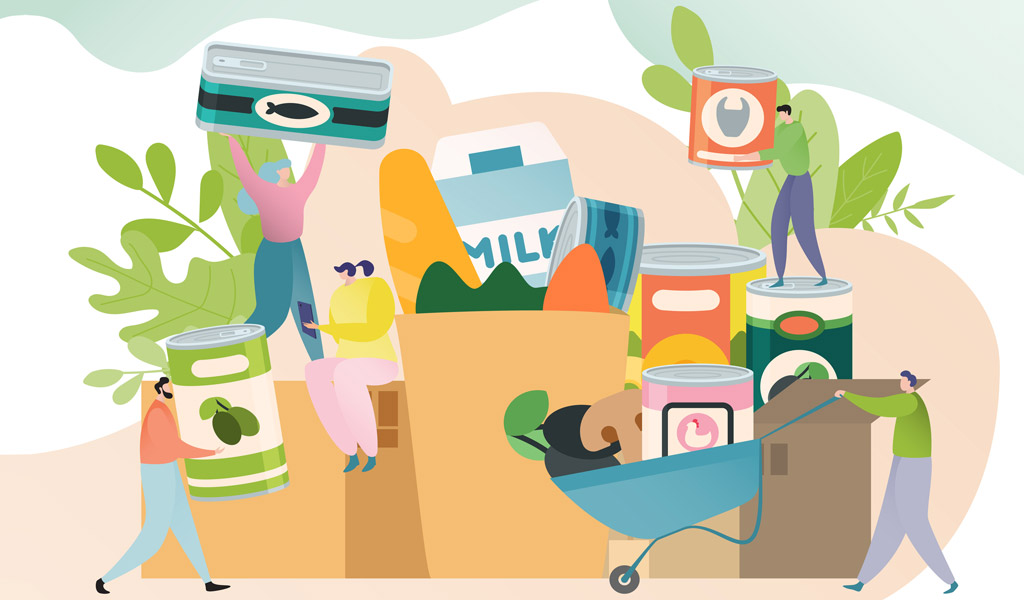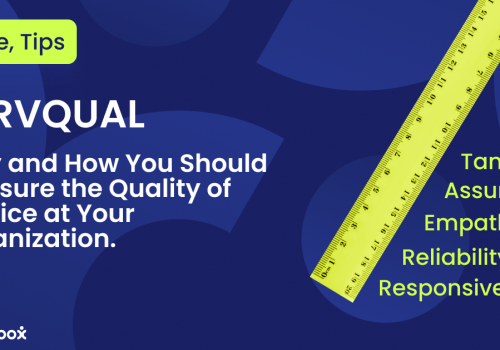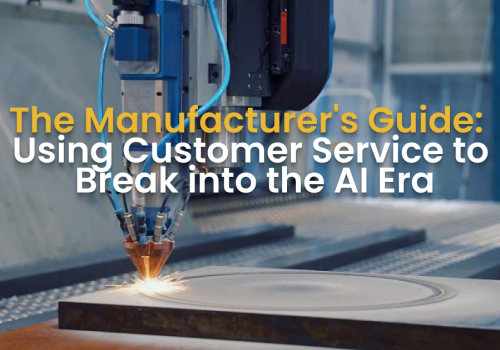Using Canned Responses. Canned responses get a bad rap in marketing. While using the wrong canned responses can harm interactions, using personal and effective canned responses can improve communication. Carefully crafted automated responses can boost leads, promote higher conversion rates, and ultimately increase your revenue. And of course, they save many hours of manual communication that is both time-consuming and costly. Here we’re going to look at how canned responses can help you be more personable, as well as some expert tips on how to craft them. Let’s take a look.
The Importance of Personalization in the Digital Age
Personalization has been a top priority for marketers over the last few years. Personalization aims to interact with customers through content and make individual users feel their interests are being considered. Put simply, no one wants to feel like a number or one member of a hive. We want to feel like individuals – each with our own set of preferences, concerns, needs, and expectations.
Today, the benefits of personalization are well understood:
- Improve customer experience – Customers today are willing to share more of their data in exchange for better experiences. According to one study, 57% of customers are willing to exchange personal information in exchange for tailored offers or discounts.
- Increased revenue – In both B2B and B2C businesses, today’s goal is to increase the customers’ lifetime value. By tapping into their purchasing preferences and providing personalization communication, you can keep customers returning because they find the things they want and enjoy the experience while buying.
- Increased customer retention – Acquiring new customers costs a lot more than retaining your existing customers, so focusing on retention is vital. Today, it’s easier than ever for customers to research your competitors and jump ship. Competition is fierce out there, so competing on customer experience is crucial if you want to retain your customers.
- Increased brand loyalty – One study found that 87% of consumers who participated in the survey said more personalized experiences increase their brand loyalty. When you bake more personalization into the brand, customers begin to feel like they share a set of values and experiences with you.
Why Canned Responses Help You Become More Personable
By using canned responses effectively, you can spark a connection with customers, making them feel valued and appreciated. One key element of connecting with customers is responding quickly. Customers want personalized responses, but they don’t want to have to wait days for them. If you type every response out manually in the hopes of sounding human and personable, you might actually fail. You could be met with angry complaints about how long you take to communicate – that your company ignores its customers. By using canned responses, you meet both objectives. You can respond quickly (almost instantly) but also provide a personal touch.

5 Winning Tips and Tricks for Excellent Canned Responses
1. Use the Information You Have
If you want your response to seem personal, like you are addressing that individual directly, then you need to use the personal data at your disposal. This means using their name to create a close connection. You can also use the information you have about their preferences. For example, if they sent you an email, but in their communication preferences, they ticked SMS rather than email, you can tailor your strategy. You should always respond to the medium the customer used (in this case, email), but you can also send them a text to say you’ve responded to their email or even reply with the same information in the text.
Another great idea is to use emojis and images to break up the text and inject some engaging and friendly content.
2. Be Consistent With Your Tone
Remember, every interaction shapes your brand perception and serves a purpose. It would be best if you always strived to keep a consistent tone in all of your canned responses. This means the language you use should match the tone and style of your other communications.
3. Use Blocks
To make your canned responses easy to manage, it’s a good idea to use reusable blocks. For example, you can have:
- Opening blocks – A friendly introduction with name, emojis, and a “thank you for contacting us.” You might want to have several opening blocks, or only a few. For example, if a customer is contacting you with a complaint, an emoji might exacerbate customer frustrations (it can look like you don’t take their complaint seriously).
- Closing blocks – A signature template and closing line. Depending on the type of response (offer, discount, complaint, query, positive feedback), you might want to create several options.
- Main block – You will likely have several main blocks to address all manner of customer questions. For example, your main text block for birthday offers will be dramatically different from a complaint email. You might also have several versions within the distinct categories to account for different customer preferences.
4. Sound Human
Canned responses often lack specific detail because they have to apply to broad customer interactions, even when we account for different communication types. This is why blocks (and having several of them) are so important. The more responses that you try to fit all situations, the less human you will sound. You want your communication to sound natural, friendly, and personable, without overpromising or being inappropriate for the message you received.
5. Don’t Be Afraid of Using Longer Canned Responses
Where appropriate, a longer canned response can be very effective. For example, if you might want to design a longer canned response around complex processes and procedures for your FAQs. These are things that would be incredibly time-consuming to type out every time, and they are also things you need to get right – human error can get you into all sorts of problems.
The Don’ts of Canned Responses
Here are some of the things you should avoid if you want to wow your customers with your canned responses:
- Using robotic language – Customers can sniff automation a mile off. Sure, they might know deep down that you’re using a canned response, but they should never be reminded of that when they read your email or communicate with customer service agents. Try to avoid overly explicit or stilted language like “Thank you for getting in touch today. How can I be of assistance?”. Real people don’t talk like that.
- Don’t automate entire conversations – Canned responses are great at filling the gaps and keeping the conversation moving. They save time for agents, but they shouldn’t eliminate their job either. Canned responses should be used in tandem with real human conversation if they are to be effective.

Best Canned Responses to Use in Your Emails
Canned responses are planned or automated answers to common customer questions. Some responses are better than others, for the reasons we’ve already looked at. But if you’re having trouble coming up with your own canned responses, then here are some examples of the best canned responses to use.
We’ve Got Your Message, And We’re Working On It
When customers submit a complaint, they are usually in a state of anxiety or frustration. Something about your product or their experience hasn’t met their expectations. When this happens, customers start to feel anxious – they become concerned that they bought the wrong product, the product is broken, or will never work as expected. The best way to calm these anxieties is to send a canned response that quickly addresses their concerns. They want to know two things:
- That you’ve received their ticket – they want to feel listened to and know that their efforts weren’t wasted.
- That you’re working on a solution.
Many companies will forget the second step. They’ll simply send a canned response saying that they’ve received the complaint and that the customer should wait to hear back. Arguably, point number 1 is the most crucial. After all, if the customer doesn’t get confirmation of their complaint, they might start sending multiple complaints, getting increasingly angry, and overwhelming customer service agents. But just because point number two isn’t the most crucial doesn’t mean it isn’t essential. If you want to provide excellent customer experiences, then you should be striving for perfect responses. Simply getting confirmation is no longer enough; customers today want to know that you’re also committed to solving their problem.
Here’s an example of a response template for this situation:
Hey (Customer Name)
Thanks for reaching out to us and bringing this issue to our attention.
Our (team name) team is working hard to address the issue and will be sure to update you as soon as we assess the situation.
If you have any further questions or concerns, you can contact us here (provide details). We’re available 24/7 – you can contact our customer service agents from 9 am-5 pm or use Live Chat or our Chatbot. Thanks for being a loyal customer.
Take care, (your name)
We’re Still Working On It
Sometimes customers have a complex issue, or you’re going through an incredibly busy period, and despite your agents working hard, they can’t fix all problems quickly. The more time that lapses, the more customers become anxious that you’ve forgotten about their query. This is why it’s a good idea to send a follow-up email to let them know that you’re still working on their case. Something like this would work great:
Hey (Customer Name)
I wanted to update you before the weekend about the status of your ticket.
Your ticket is still in progress, and our product team is working hard to find a solution. We are prioritizing your request, and I’ll make sure it’s resolved by the start of next week.
Thanks for your patience,
Take care and have a great weekend, (your name)
We’ve Resolved Your Case
Once the customer has confirmed that their issue has been fixed, it’s important to send a confirmation and close the case. This provides a record for both you and the customer that a satisfactory solution was achieved. It’s also a good little reminder to the customer that you fixed their issue, and you can be relied upon in the future!
To make it more personal, the response should always come from the agent working on the ticket, rather than the whole company. This promotes a feeling of a one on one connection. Here’s an example of a canned response you can use in this situation:
Hey (customer name)
Thanks for taking the time out of your day to speak to me about (issue) today. I’ve (what you’ve done to solve the problem).
If there’s anything else I can help you with, please don’t hesitate to reply to this email or call me at (number).
Thanks, (your name)




















